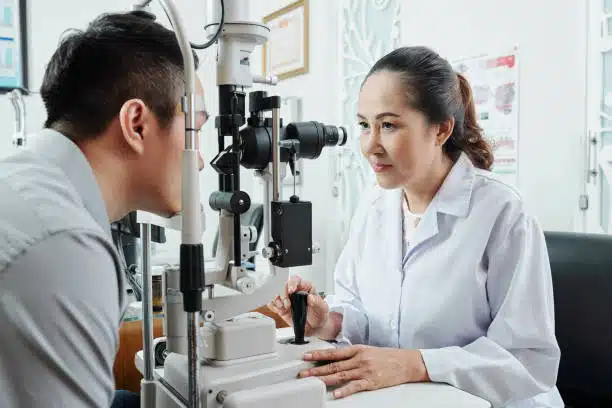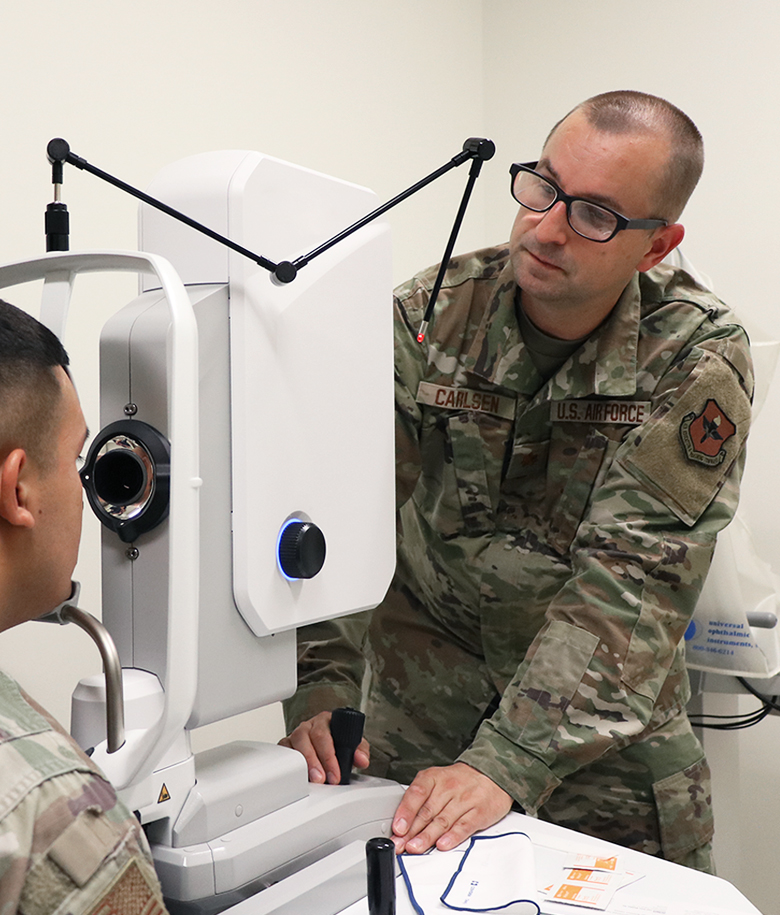Checking Out the current Technical Developments in Optometry and What They Mean for Eye Doctors
From the precision of Optical Coherence Tomography to the nuanced understandings provided by AI-driven diagnostic devices, these advancements are setting new standards in person evaluation and therapy. As these advancements permeate the technique, optometrists are faced with the challenge of accepting these devices to improve patient outcomes.
Developments in Diagnostic Equipment
Advancing the field of optometry, innovations in analysis tools have actually changed the means eye treatment professionals examine and identify eye conditions and aesthetic disabilities. The past decade has actually seen significant technological advancements, making it possible for more extensive and exact examinations. Optical Coherence Tomography (OCT), for example, provides high-resolution cross-sectional pictures of the retina, permitting the early detection of diseases such as glaucoma and age-related macular deterioration. This non-invasive imaging method has actually become indispensable in modern optometric technique.
An additional key innovation is the intro of innovative corneal topography systems, which map the surface curvature of the cornea with precision. These devices are especially advantageous for fitting call lenses and identifying corneal problems. Furthermore, digital retinal imaging has actually transformed standard ophthalmoscopy, using thorough, breathtaking sights of the retina that facilitate detailed aesthetic examinations.
The advancement of wavefront aberrometry has additionally been essential, enabling the analysis of refractive errors with unparalleled precision (Opticore Optometry). This modern technology aids in customizing restorative lenses and improving surgical results for refractive surgical treatments. Jointly, these diagnostic improvements empower optometrists to supply superior person care, ensuring very early treatment and customized treatment strategies, inevitably boosting aesthetic wellness outcomes
AI in Patient Administration
Structure on the foundation of sophisticated diagnostic devices, the consolidation of fabricated intelligence (AI) in individual administration stands for a transformative jump for optometry. AI systems are progressively used to enhance performance, accuracy, and customization in patient care.
In addition, AI-driven platforms promote streamlined individual interactions and management processes. Automated scheduling, online consultations, and individualized follow-up plans not only boost individual contentment however additionally optimize time administration for specialists. These systems can triage people based on the seriousness of their problems, making certain that those in important need receive punctual attention.
Additionally, AI improves decision-making by giving optometrists with evidence-based suggestions and therapy paths. By incorporating information from electronic health and wellness documents, AI devices offer understandings that educate clinical decisions, lowering the risk of errors and improving patient results. As AI proceeds to advance, its duty in person administration will likely increase, improving the landscape of optometric treatment.
Developments in Retinal Imaging
In the realm of optometry, retinal imaging has witnessed remarkable technical developments that are boosting diagnostic capacities and client care. Developments such as Optical Coherence Tomography (OCT) and fundus digital photography have transformed exactly how eye doctors analyze the retina and visualize. OCT, particularly, supplies high-resolution, cross-sectional pictures of the retina, enabling the in-depth assessment of its layers. This capability is vital for early detection and management of conditions like glaucoma, diabetic retinopathy, and age-related macular deterioration.
Boosted imaging techniques like OCT angiography are more refining analysis precision. This non-invasive strategy maps blood flow in the retina, supplying important insights right into vascular health and wellness without the need for color injections. In addition, adaptive optics modern technology is being integrated into retinal imaging systems to deal with ocular aberrations, providing unprecedented photo clearness. Such advancements assist in the identification of min retinal changes that can signify illness progression.
In addition, developments in man-made knowledge are boosting retinal imaging by enabling automated evaluation of huge datasets. These systems assist optometrists in determining patterns indicative of pathology, thus improving analysis precision and performance. Collectively, these developments pop over to these guys are changing retinal imaging into a keystone of modern-day eye treatment, improving end results and broadening healing opportunities.
Teleoptometry's Growing Role
Teleoptometry is progressively ending up being an essential part of eye care, driven by improvements in data and diagnostic devices. As optometry welcomes electronic improvement, teleoptometry facilitates remote appointments, allowing optometrists to extend their solutions past traditional boundaries. This is particularly helpful in underserved and country locations where access to specialized eye care is commonly restricted. By leveraging high-resolution video conferencing and advanced retinal imaging, eye doctors can conduct extensive eye exams from afar, ensuring timely medical diagnosis and therapy.
The assimilation of expert system (AI) more improves teleoptometry, enabling the analysis of visual information and helping in the detection of ocular conditions such as glaucoma and diabetic person retinopathy. AI-powered algorithms can rapidly interpret complex imaging information, providing eye doctors with beneficial understandings that reinforce professional decision-making.
Additionally, teleoptometry sustains continuity of treatment through smooth assimilation with electronic health and wellness documents (EHRs), enabling optometrists to maintain detailed individual histories. When seeking advice from with various specialists., this ensures that people receive personalized and constant treatment also.
Despite these benefits, obstacles stay, including making sure information security and managing individual assumptions. Teleoptometry represents a substantial stride in the direction of even more obtainable, reliable, and patient-centered eye care. As technology develops, its role is poised to expand even more.

Future Patterns in Eye Care
A myriad of ingenious patterns is established to improve the future of eye care, driven by technological innovations and the developing needs of patients. One significant trend is the integration of expert system (AI) in diagnostics, which guarantees to boost the accuracy and effectiveness of eye assessments. AI formulas can analyze vast quantities of information from retinal images, possibly identifying problems like diabetic retinopathy and glaucoma earlier than traditional techniques.
In addition, individualized medication is getting traction in optometry, with genetic screening educating personalized therapy plans. This strategy intends to optimize person results by customizing interventions to individual hereditary accounts. Wearable technology, such as clever get in touch with lenses, is also imminent, using real-time monitoring of intraocular stress or glucose degrees, therefore providing continuous insights right into ocular and systemic health and wellness.
The adoption of increased reality (AR) and digital reality (VR) in training and patient education and learning is see post another arising fad. These modern technologies provide immersive experiences that can boost understanding and skills both for eye doctors and clients. As these fads evolve, optometrists must stay abreast of technical improvements to supply innovative treatment, ensuring enhanced individual outcomes and satisfaction in the vibrant landscape of eye treatment.
Conclusion

Jointly, these analysis improvements empower eye doctors to supply premium person care, guaranteeing very early treatment and tailored therapy methods, ultimately enhancing aesthetic health end results.

As these modern technologies continue to develop, eye doctors need to adapt and integrate them right into practice, ultimately enhancing workflow effectiveness and raising the criterion of eye treatment delivered to individuals.
 Shane West Then & Now!
Shane West Then & Now! Suri Cruise Then & Now!
Suri Cruise Then & Now! Jane Carrey Then & Now!
Jane Carrey Then & Now! Stephen Hawking Then & Now!
Stephen Hawking Then & Now! Peter Billingsley Then & Now!
Peter Billingsley Then & Now!